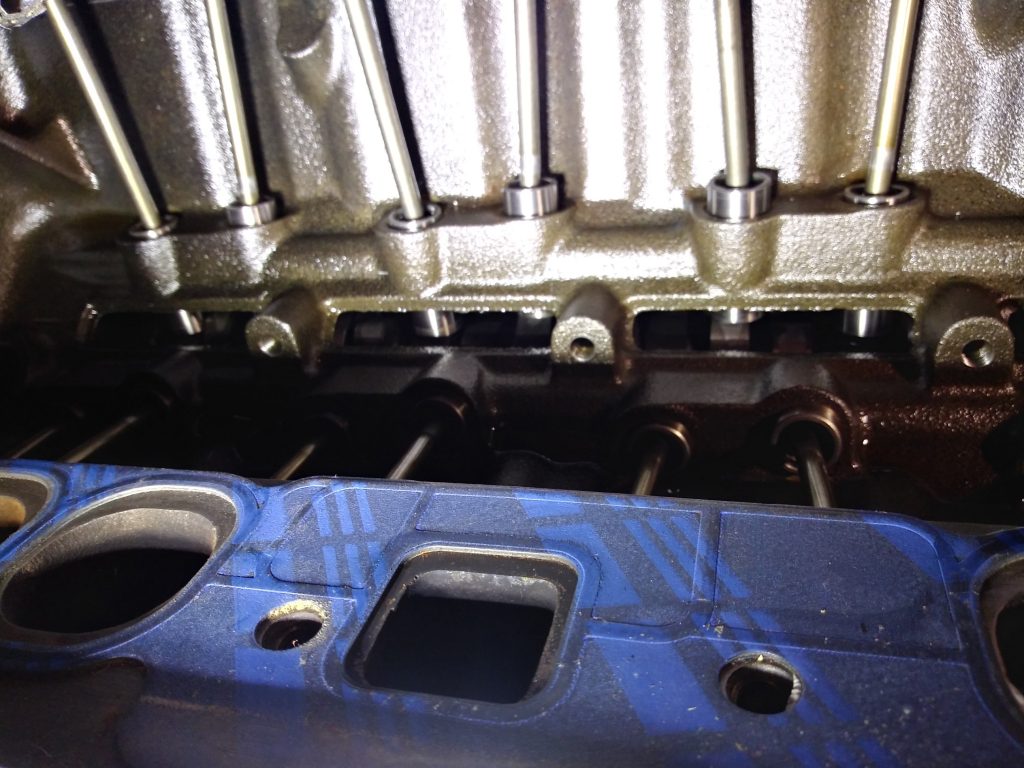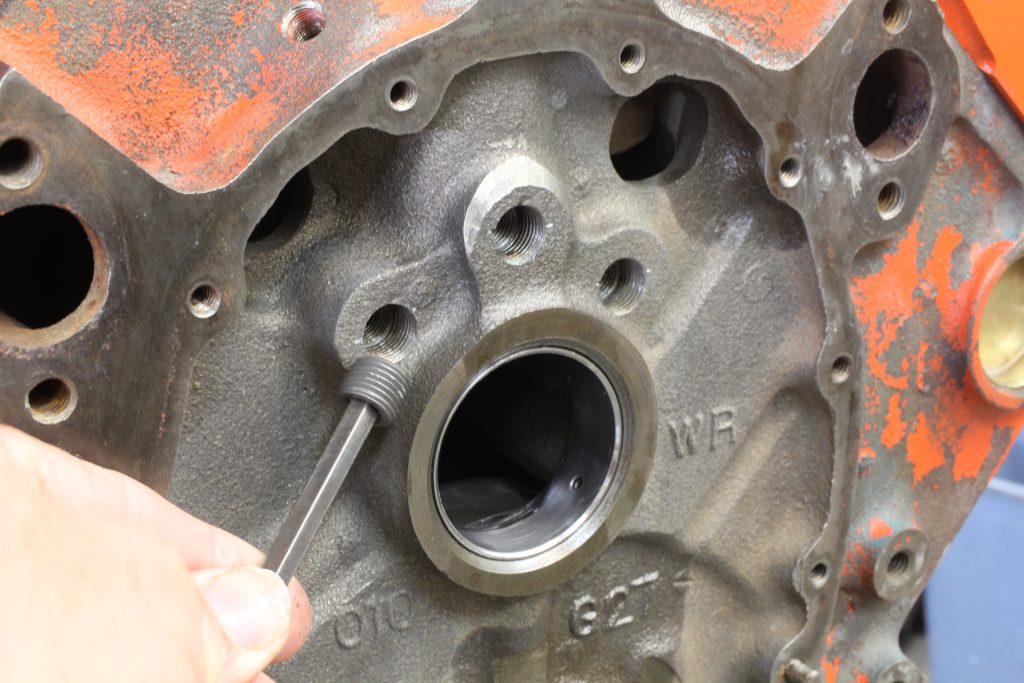I recently built a Gen VI 454 big block Chevy street engine that came out of a late model Chevy truck. I had the local machine shop do all the block work and I checked all the clearances to make sure the bearings would be okay. I installed a flat tappet camshaft in the engine rather than a hydraulic roller because I wasn’t interested in making big power with a hydraulic roller setup, so we saved some money on the cam and lifters.
With the engine in car, we pre-lubed the engine and here’s where the problem came up. We could only get about 10 to 12 psi out of spinning the oil pump. We figured the drill motor just wasn’t spinning the oil pump fast enough. So we finished the pre-lube and installed the distributor but again, all we had at idle was about 10 to 15 psi of oil pressure at idle. We revved the engine and the pressure really did not come up much. We have plenty of oil and no leaks so we’re not sure what we did wrong. Can you suggest what to check? We’re hoping we don’t have to pull the engine but we will if you can think of where we screwed up.
B.D.
There are a couple of places where you might look for the possible loss of oil pressure. Of course, first we have to mention that we will assume you checked all the bearing clearances including rods and mains before assembling the engine. We’ve seen instances where the crank was machined 0.010-under on the rods and mains and then the engine assembler used standard bearings only to discover low oil pressure in the engine. So if your clearance check was to spin the crank over then you need to start with always checking clearances.
Assuming the bearing clearances are correct, we’ve actually made the mistake of leaving the oil galley plugs out from behind the cam timing set. You’d think that leaving these plugs out would result in no oil pressure at all, but even a standard output pump can produce sufficient volume to still make perhaps 10 psi with cold oil. Of course, the only way to know this is to remove the front accessory drive and timing cover in order to check.
But before you remove the entire front accessory drive on the engine and the timing chain cover and loosen the pan, try this first:
Start by removing the intake manifold, which is much easier than the front timing chain cover. You mentioned that the engine in question is a Gen VI 454. When GM redesigned the big block Chevy with the Gen V/VI configuration, along with the one-piece rear main seal they also placed the main oil galley down the center of the lifter valley. This galley has three small pipe plugs installed down the middle of the casting. Most machine shops remove these plugs to allow proper cleaning of the galley. If one (or all three) of these plugs were left open, this would create an internal oil leak that would create the situation that you now face.
If you happen to have access to a plumber buddy who has a borescope, it might be possible to remove the distributor and peer down inside the lifter valley before removing the intake manifold to see if one or more of the plugs are missing. You will need to confirm that all three plugs are in place using this method but it does save removing the intake manifold and destroying the intake gasket.
Summit Racing actually sells a bunch of different borescopes—including an interesting unit from Klein Tools that is affordable because, instead of a video screen, it transmits the video to an Android smartphone. So if you have access to an Android device, this might be a quick and affordable way to use a borescope.
Another point we’d like to make based on what you mentioned, is that you did pre-lube the engine but the pressure did not come up as expected. Our experience is that a half-inch drill motor is more than capable of creating sufficient speed—around 800 rpm or so to create sufficient oil pressure. Our half-inch DeWalt drill motor consistently creates 60 psi of oil pressure. Remember that an 800 rpm drill speed is equal 1,000 to 1,600 rpm engine speed, since the cam spins at half crankshaft rpm. The point here is that only having 10 to 12 psi while pre-lubing was a major clue that something was not right with the engine, and the issue should have been addressed at that point, before the engine was installed in the car.
This would have saved you some work if the engine needs to be removed for repair.



Another thing to check on a Gen 6 BBC is the bypass valves located in the oil filter pad area. If you are not running an oil cooler and have blocked off the feed and return bosses on the block you must remove the center bypass valve underneath the fitting for screwing on the oil filter. You also need to make sure the bypass valve is present in the offset hole. If not configured in this manner you may have low oil pressure issues when blocking off the oil cooler feed and return bosses.
Could this also be true for a small block Vortec engine where the cooler has been removed? I’m having a similar issue…
Although it doesn’t seem likely as you had issues right from assembly, we always “pinned” the oil pump pickup as they seemed to have a tendency to separate from the pump causing it to “suck air”.
Would going from roller lifters to non-roller lifters allow oil to by-pass lifters?
I found an issue on a Mk IV which turned out to be that holes (0.125″) drilled for cam gear/chain oiling, in the front oil gallery plugs, bled an unbelievable amount of hot oil. Problem went away when I replaced with new plugs with 0.030″ holes
I have a fresh rebuild on a IV 454 and I have o oil psi at hot idle with 10/30 oil. Pressure is good at cold start but falls off when oil gets hot. I put 15/40 oil in and hot idle is 18 psi. Can you tell me what’s going on.
Also, when the shop cleaned the block did they remove the diverter plug from the oil galley from the pump to the filter? If they did, did they or you replace it? Not 100% sure the Mk6 has that plug, but if it does and it is left out you will have low oil pressure. To check if it is there you can drop the pan and pump and run a stiff wire ( like a chunk of coat hanger ) up the passage. If it goes further than 2 to 3 inches drop the rear main cap and look up the passage with a light. You should be able to see the plug. I havve had several friends and acquaintances who have forgotten this plug and had eactly your problem.